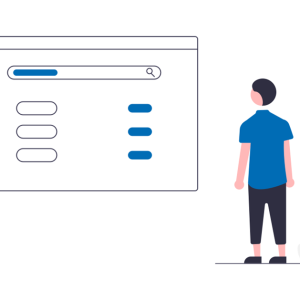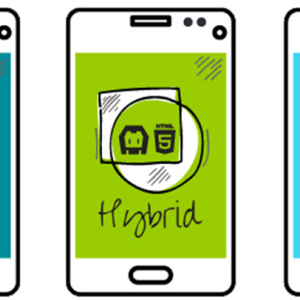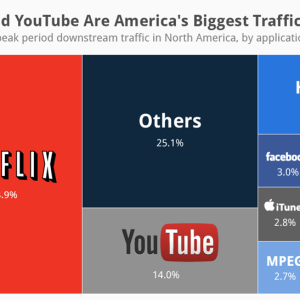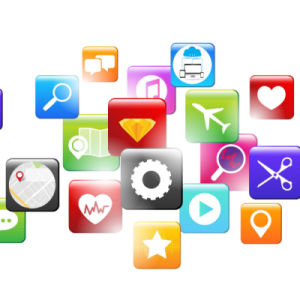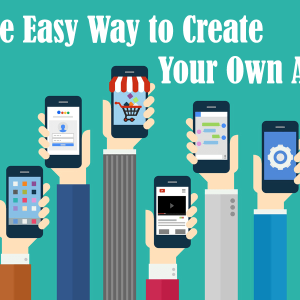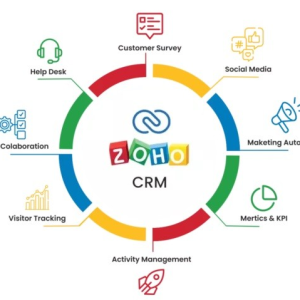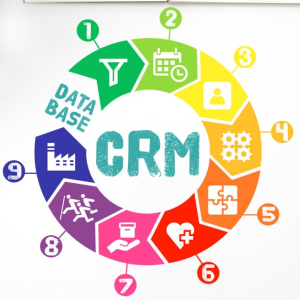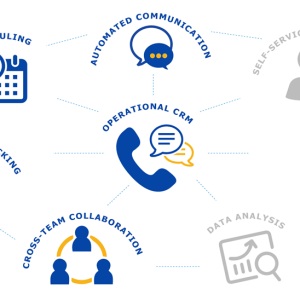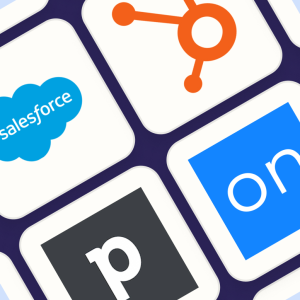Introduction
54% of marketers say they currently use a mobile applications to reach out to their prospects and customers
(Source: SalesForce)
There are many different types of mobile applications that are developed using different technologies. This comprehensive guide will help you understand the various types of mobile applications and the technology used to develop them. It will also help you decide which technology is best suited for your needs and requirements.
Types Of Mobile Applications
There are many different types of mobile applications that can be broadly classified into the following categories:
Native Mobile Applications: These are applications that are developed specifically for a particular mobile platform using the native programming language and SDK for that platform. Native mobile applications have the best performance and user experience but are also the most expensive to develop.
Web Mobile Applications: These are mobile applications that are developed using web technologies like HTML, CSS, and JavaScript. Web mobile applications are cheaper to develop than native applications but they are not as fast or responsive as native applications.
Hybrid Mobile Applications: These are mobile applications that are developed using a combination of web technologies and native technologies. Hybrid mobile applications are cheaper to develop than native applications but they are not as fast or responsive as native applications
Native Mobile Applications

Native apps are the best way to maximize your phone’s capabilities. They’re built for just one platform, so you can’t mix and match – say use an Android app on a Windows device or vice versa!
Technology Used In Native Apps:
If you want to develop a native application then you will need to use the native technology for that platform. This is the most expensive and time-consuming option but it will give you the best performance and user experience.
Native apps are written using a variety of programming languages. Some examples include Java, React, Python, Kotlin, Swift, C++, etc. These app-coding formats allow developers to use their preferred language and incorporate native functions for maximum performance on specific platforms.
The development process of native mobile applications involves the following steps:
1. Design and wireframe the app
This requires creating a blueprint of the app’s layout, functionality, and navigation. The wireframe is then used to create a prototype of the app.
2. Develop the app
The next step is to start coding the app using the native programming language and SDK for the platform.
3. Test the app
After the app is developed, it needs to be tested on various devices to ensure that it works as intended.
4. Publish the app
Finally, the app is published on the App Store or Google Play for users to download and use.
Advantages of Native Mobile Applications:
1. Optimal performance: Native apps are specifically designed and developed for a particular platform. This results in optimal performance as the app can take full advantage of the platform’s features and capabilities.
2. Best user experience: Since native apps are designed specifically for a particular platform, they provide the best user experience. They are also more intuitive and easy to use as they follow the platform’s design guidelines.
3. Greater security: Native apps are more secure as they can take advantage of the platform’s security features.
4. Access to native features: Native apps have access to all the native features of a platform, such as a camera, contacts, location, etc.
5. Offline access: Native apps can work offline as they are stored locally on the device.
6. Push notifications: Native apps can send push notifications to users even when they are not using the app.
Disadvantages of Native Mobile Applications:
1. More expensive and time-consuming: Developing a native app is more expensive and time-consuming as it requires different versions for different platforms.
2. Less flexibility: Native apps are less flexible as they can only be developed for a specific platform.
3. No cross-platform compatibility: Native apps are not compatible with other platforms, so you will need to develop separate versions for each platform.
Examples of Native Apps:
1. WhatsApp
2. Facebook
3. Instagram
4. Snapchat
5. Twitter
Web Applications

Web apps are websites that you can access on your phone browser. They don’t need to be installed like traditional applications, instead, they just open up in a responsive format and adjust themselves depending on what device the user has via its size constraints or orientation changes (for example). When installing these types of “websites,” it’s often as simple as saving an URL so there will always stay live access even if offline!
Technology Used In Web Apps:
Web apps are the future of web design, as they can be designed and developed quickly. This is the cheapest and fastest option but the performance and user experience will not be as good as a native application.
Web apps use HTML5 programming languages along with the CSS3 framework to provide interactivity between users on a website or app-based environment. They can also be built using a variety of programming languages like Ruby or JavaScript for example!
The development process of a web mobile application involves the following steps:
1. Design the app interface and user experience
To design the interface, you need to understand how users will interact with your app. You also need to consider the different screen sizes of various mobile devices.
2. Develop the frontend
The front end is the part of the app that users see and interact with. It is written in HTML, CSS, and JavaScript.
3. Develop the backend
The backend is the part of the app that runs on a server. It stores data and handles business logic. It is written in a programming language like PHP, Ruby, or Java.
4. Deploy the app
To deploy your app, you need to host it on a web server and make it accessible to users.
Advantages of Web Applications:
1. Easy to develop: Web technologies are well-known and commonly used by developers, making it easier to find someone with the necessary skills to create your app.
2. Easy to deploy: Since web apps don’t need to be installed on devices, they can be deployed quickly and easily.
3. Platform independent: Web apps can be accessed on any device with a web browser, making them platform-independent.
4. Easy to scale: Web apps can be scaled easily by adding more servers as needed.
Disadvantages of Web Applications:
1. Limited access to device features: Since web apps run in a browser, they have limited access to device features such as the camera, microphone, and GPS.
2. Poor performance: Web apps tend to be slower and have poorer performance than native apps.
3. Lack of offline support: Since web apps rely on a network connection, they cannot be used offline.
4. Security risks: Web apps are more susceptible to security risks than native apps because they are often not as well-protected as native apps.
Examples of Web Apps:
1. Gmail
2. Google Maps
3. Trello
4. Asana
5. Basecamp
Hybrid Mobile Applications

Hybrid apps are the new wave of web development. These cross-platform, native-looking programs have everything you would want in an app including fast performance and offline capabilities while still being portable between devices like smartphones or tablets that use different operating systems (OS).
Technology Used In Hybrid Apps:
Hybrid apps are a thing. These full-featured web applications have all the bells and whistles you would expect from native software, but they’re just HTML pages dressed up in beautiful designs– able to work even when your internet connection goes down!
These are technologies that allow you to develop applications that can be accessed from any device with a web browser or a native mobile application. The most popular hybrid technologies are Cordova and Ionic.
The development process of a hybrid mobile application involves the following steps:
1. Design the app interface and user experience
To design the interface, you need to understand how users will interact with your app. You also need to consider the different screen sizes of various mobile devices.
The user experience should be intuitive and easy to use.
2. Choose the right hybrid technology
There are many different hybrid technologies available, so you need to choose the one that’s right for your project. Some popular options include Cordova and Ionic.
3. Develop the app
Once you’ve chosen the right technology, you can start developing your app. Hybrid mobile apps are developed using HTML, CSS, and JavaScript.
4. Test and deploy the app
After the development process is complete, you need to test the app to make sure it’s working properly. Once everything is working correctly, you can deploy the app to the App Store or Google Play.
Advantages of Hybrid Mobile Applications:
1. Easy to develop: Hybrid mobile apps are easier to develop than native apps. This is because they’re developed using web technologies that are well-known and easy to use.
2. Cost-effective: Hybrid mobile apps are more cost-effective than native apps. This is because you only need to develop one version of the app that can be used on multiple devices.
3. Fast development time: Hybrid mobile apps have a shorter development time than native apps. This is because you don’t need to develop separate versions of the app for each platform.
4. Easy to maintain: Hybrid mobile apps are easier to maintain than native apps. This is because you only need to make one set of changes that will be applied to all versions of the app.
Disadvantages of Hybrid Mobile Applications:
1. Limited functionality: Hybrid mobile apps have limited functionality compared to native apps. This is because they’re restricted by the capabilities of web technologies.
2. Poor performance: Hybrid mobile apps often have poor performance compared to native apps. This is because they’re not as efficient at using device resources.
3. Incompatible with some devices: Hybrid mobile apps may be incompatible with some devices. This is because not all devices support the same web technologies.
Examples of Hybrid Mobile Applications:
1. Instagram
2. Uber
3. Airbnb
4. Pinterest
How to choose the best technology for your project
When it comes to mobile app development, there are many different technologies to choose from. But which one is the best for your project? The answer to this question depends on your project requirements and the capabilities of the technology. But first:
1. Define your project requirements
The first step is to define your project requirements. You need to consider what you want your app to do and what features it needs to have.
If you have a larger budget, you can afford to be more flexible with your requirements. But if you have a smaller budget, you need to be more specific about what you want.
For example, you can choose a web app if you are short on time and money. But if you want your app to be fast and stable, you need to choose a native app, and with limited resources, you can either go for a web app or a hybrid app, as they are naturally budget-friendly.
2. Consider your target audience
You also need to consider your target audience. This will help you decide which platform to develop for and what features to include in your app.
For example, if you’re targeting mobile users, then native apps are the way to go. But if you want to reach a wider audience, then web apps or hybrid apps might be a better option.
3. Research the available technologies
Once you’ve defined your requirements, you can start researching the different technologies that are available. You need to consider the pros and cons of each technology to find the one that’s right for your project.
4. Choose the best technology for your project
After you’ve researched the available technologies, you can choose the one that’s best suited for your project. This decision should be based on your project requirements and the capabilities of the technology.
Whichever types you choose, there is no denying that each of them has its pros and cons. The best way to find out is by taking the help of an expert app development company like us, which can guide you in the right direction and help you make an informed decision.
Conclusion
With growing competition in the market, it has become essential for businesses to have a strong online presence. And what better way to do that than to have a mobile app? But before you start developing your app, you need to decide which technology is best suited for your project.
We hope this guide has helped you understand the different types of mobile applications and the technology used to develop them. If you have any further questions, feel free to contact us at 12channels and we’ll be happy to help. And if you need help getting started, book a call with our subject matter expert to help you with the process.


